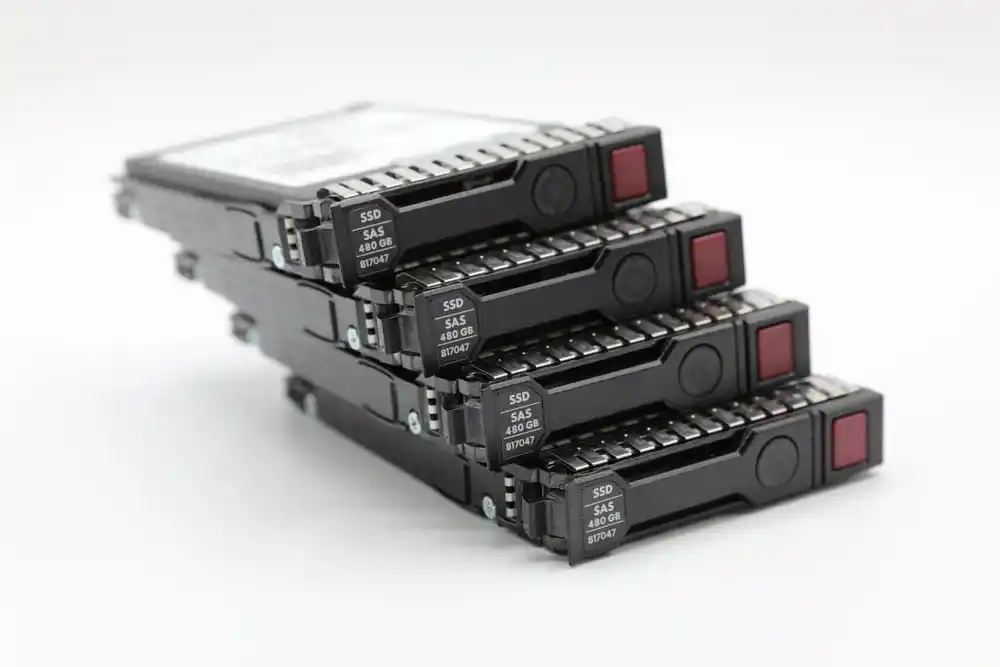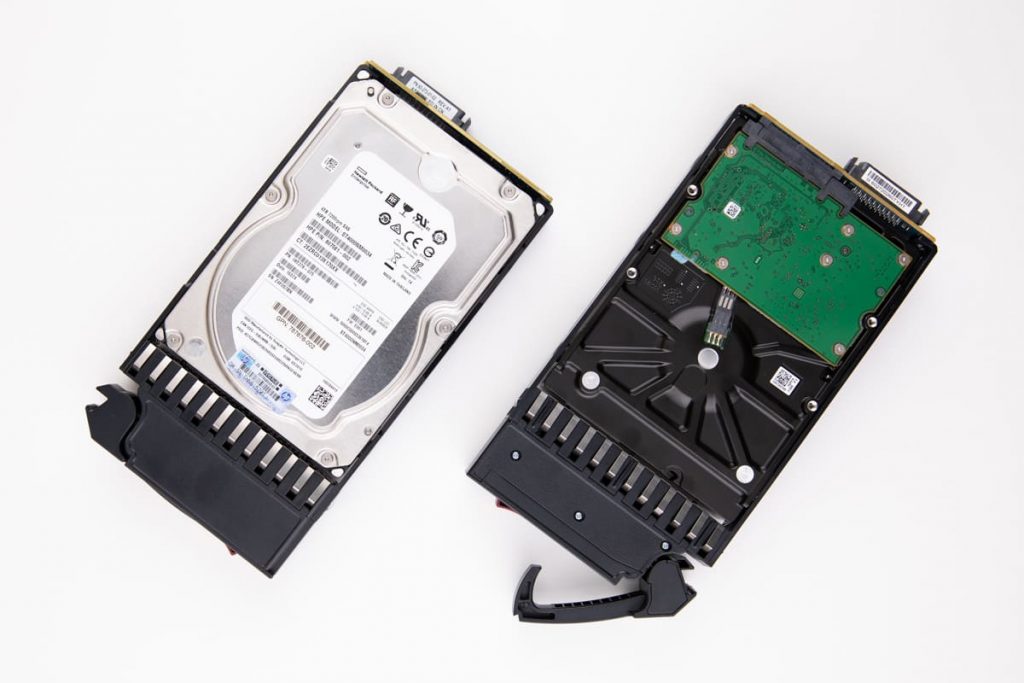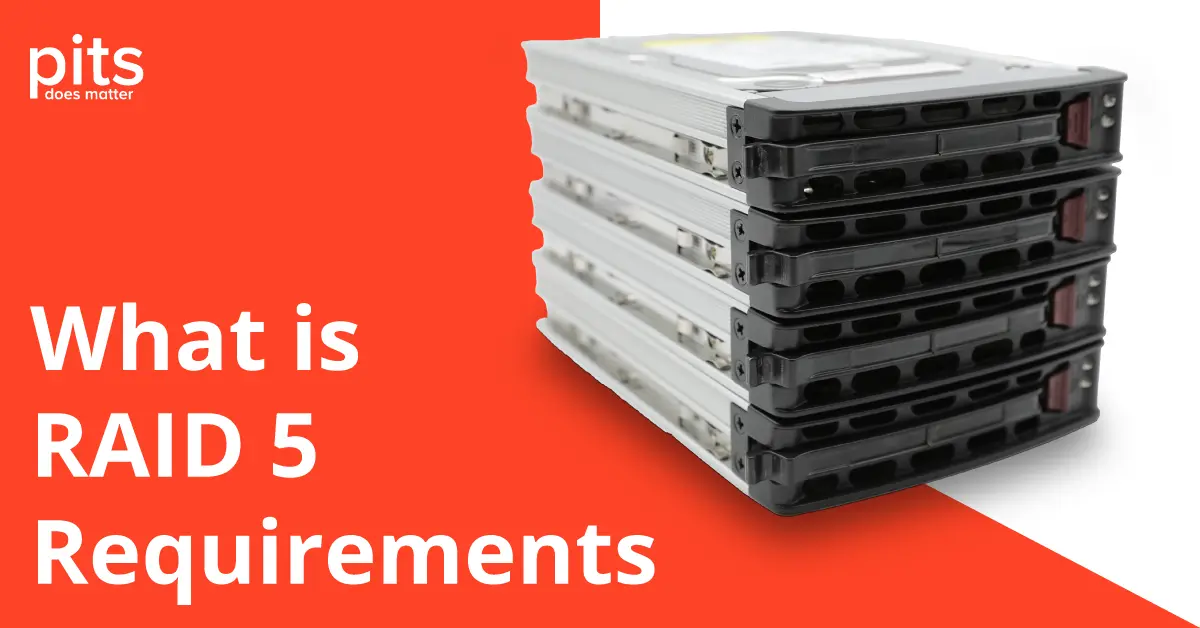What is RAID 5 Requirements? RAID 5 requirements are essential for anyone dealing with data storage and protection. RAID 5, or Redundant Array of Inexpensive Disks, is a widely-used method for data storage that distributes data across numerous drives to ensure data integrity and improve performance. Understanding the requirements for implementing a RAID 5 system is vital for IT professionals, businesses, and anyone else who values the safety and accessibility of their digital information.
Three Essential Requirements for RAID 5
Three Essential Requirements for RAID 5 include a minimum of three hard drives, a RAID controller, and identical disk capacities for optimal performance. These requirements ensure the proper functioning and optimal performance of your RAID 5 setup. Let us examine the key requisites for RAID 5 disk requirements, focusing on the top three requirements.
Capacity Drives
Capacity drives are a fundamental requirement for setting up RAID 5. For RAID 5 to work correctly, all drives in the array must have the same capacity. This ensures that the parity distribution across the drives functions properly. If you use drives with varying capabilities, the RAID 5 setup will only be able to utilize the capacity of the smallest drive, resulting in unused space on the larger drives.
RAID 5 Fault Tolerance
RAID 5 fault tolerance refers to the ability of a RAID 5 setup to continue functioning properly even if one drive fails. RAID 5 is renowned for its ability to tolerate faults, but it necessitates a minimum of three drives in the array. One drive serves as a parity drive, storing instructions for data reconstruction in case of drive failure. If fewer than three drives exist, RAID 5 cannot operate correctly and will not offer fault tolerance.

Speed
Speed is another fundamental requirement for a RAID 5 setup, as it uses striping to distribute data across multiple drives simultaneously. RAID 5 is recognized for its speed because it distributes data across multiple disks. As a result, the array can access data from multiple drives simultaneously, leading to faster speeds than using a single disk. It is important to note that write speeds may experience a decrease due to the requirement of performing parity calculations.
How Many Drives for RAID 5
The minimum number of drives for RAID 5 is three, but no maximum limit is imposed. However, it is important to consider that adding more drives increases the risk of drive failure and can affect performance. In theory, RAID 5 can support up to 16 drives, but it is generally recommended not to exceed 6-8 drives for a single RAID 5 array. This balance ensures a well-rounded combination of storage capacity, performance, and fault tolerance, providing optimal reliability and efficiency for your RAID 5 configuration.
A RAID 5 setup with three or more drives utilizes two key methods: striping and parity. Striping divides the data into blocks and distributes them across all drives in the array, while parity generates redundant information for each data block. Thus, to attain optimal capacity, fault tolerance, and improved read speeds, a minimum of three drives is required in your RAID 5 configuration.
RAID 5 - Minimum Disk Necessities
RAID 5 – Minimum Disk Necessities are quite clear and straightforward: a minimum of three identical capacity drives and a RAID controller to manage them. For optimal storage capacity in RAID 5, it is vital to have drives with exact disk space. Whether you have three or sixteen disks, meeting the RAID 5 requirements necessitates their uniformity. Furthermore, specific criteria for the drives used in a RAID 5 setup must be met, including:
- Matching sector size
- Rotation speed
- Firmware version
It is advisable to use enterprise-grade drives for enhanced performance and durability. Avoiding drives with different specifications or from other manufacturers is crucial to prevent compatibility issues and maintain the overall performance of your RAID 5 setup.
Recovering a RAID 5 Single-Disk Failure
Recovering from a single-disk failure in a RAID 5 array is relatively simple because of its built-in fault tolerance. When a disk fails, the system functions in a degraded mode, reconstructing missing data from the parity information to fulfil read requests.

To replace the failed disk, you need to identify and remove it from the array. Once you install a new disk with the same capacity, the RAID controller will begin rebuilding. This involves transferring data and parity information from the remaining drives to the new ones. It’s crucial to remember that the system is vulnerable to a second disk failure while in degraded mode, which could lead to data loss. Therefore, replacing the failed disk as soon as possible is essential.
Fulfilling RAID 5 disk requirements ensures a functional and efficient storage system. Each drive in the RAID 5 setup should be identical regarding disk space, sector size, rotation speed, and firmware version, to guarantee compatibility and optimal performance.
How to Recover Data in RAID 5 After a Failure
RAID 5, like any other data storage system, risks failure. If a drive fails, the array will continue to operate but with reduced performance. However, the entire array may become inaccessible if multiple drives fail simultaneously.
A backup plan is crucial to prevent data loss in case of a RAID 5 failure. Regularly backing up your data is the most effective way to safeguard your important information.
In the event of a failed RAID 5 array, data recovery options are available, although it can be a complex process that may require professional assistance.At PITS Global Data Recovery Services, we specialize in recovering data from RAID 5 arrays, even in cases of multiple simultaneous drive failures.

Our team of experts has extensive experience in handling intricate RAID architectures and will work diligently to retrieve your data with minimal downtime. Whether hardware issues, software corruption, or human error causing the RAID 5 failure, you can trust PITS Global Data Recovery Services to resolve your data loss crisis.
Frequently Asked Questions
Does RAID 5 require a minimum?
RAID 5 needs at least three drives for proper function and fault tolerance. However, the maximum number of drives depends on capacity and performance requirements. Consider these factors before deciding the number of drives for your RAID 5 setup.
Can RAID 5 lose 2 drives?
RAID 5 can tolerate the loss of two drives without complete failure. It uses parity information to reconstruct missing data in the event of a single drive failure. However, if a second drive fails in degraded mode, there is a high risk of data loss. Therefore, prompt replacement of failed drives is crucial to minimize this risk.
Can you do RAID 5 with 4 drives?
RAID 5 can be configured with four drives, but adding more drives increases the risk of failure and impacts performance. Consider your storage needs and performance requirements before deciding the number of drives for your RAID 5 setup.
Is RAID 5 more speedy than a single drive?
RAID 5 performs faster than a single drive with striping and parity features. However, the speed depends on the number and rotation speed of drives and the data type accessed. Consider your performance needs before choosing between RAID 5 and a single drive.
How many drives for RAID 5 support?
The number of RAID 5 disk requirements can vary based on capacity requirements, performance needs, and the particular RAID controller used. Some controllers may have limitations, while others can support more drives.
